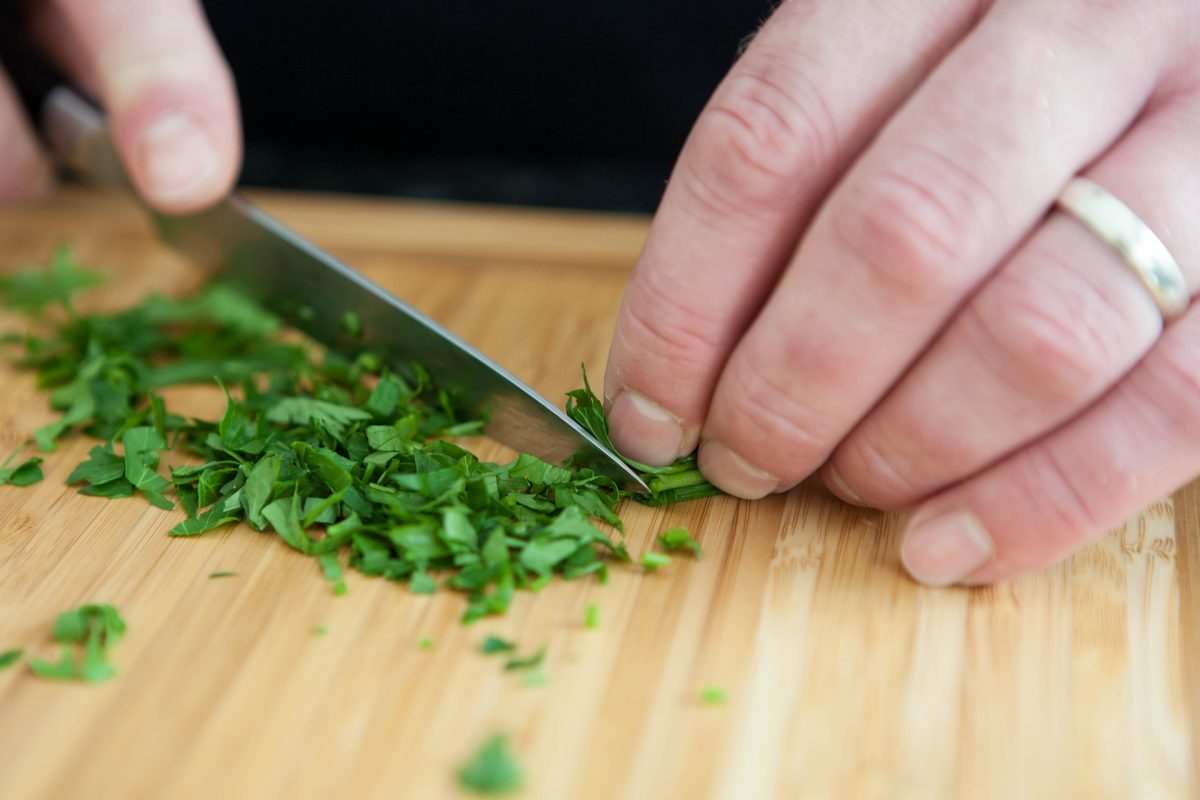Kyocera Kyotop Damascus Pakka Handle 6.0-Inch Chef KnifeChefs are as passionate about their kitchen knives as motor car mechanics are about their socket sets or violinists about their violins. All of these people need quality tools in their chosen careers to work efficiently and productively and to deliver quality work. The Kyocera Kyotop Damascus Pakka Handle 6.0-Inch Chef Knife is just such a kitchen tool that should gladden the heart of any chef. This knife’s blade is manufactured from ceramic zirconia and so presents a different alternative to kitchen knives with metal blades. If you are in search of the best chef knife around, could the Kyocera Kyotop Damascus Knife perhaps be it?
Kyocera Kyotop Damascus Pakka Handle 6.0-Inch Chef Knife Features and Specifications
- It measures 11.5″ x 0.7″ x 1.2″
- It weighs approximately 3.5 ounces
- It is a specially designed 6″ chef knife for constant chopping, slicing and dicing
- It is manufactured by high tech blade construction process with a hardness comparable to diamond
- It is an ultra sharp and long-life blade
- It is stain and rust proof
- It has moisture resistant and triple riveted Pakka wood handles
- It works well on different cutting surfaces including wood and plastic
What Makes a Chef’s Knife with a Ceramic Blade So Special?
A ceramic knife’s blade is manufactured from a very hard and tough ceramic material; in the case of the Kyocera Kyotop Damascus, the material used is called zirconia, which is actually zirconium dioxide. These types of ceramic knives are generally manufactured by means of dry pressing zirconia powder and then firing it through solid-state sintering. The resulting knife blade is sharpened by way of grinding the blade edges with a diamond-dust-coated grinding wheel. Zirconia is very hard and as such, a ceramic blade’s extremely hard edge hardly ever requires any sharpening, and ceramic Knives produced by Kyocera are generally ideal for common purposes that require top-notch edge retention or resistance against wear.
What Makes the Kyocera Kyotop Damascus Knife Special?
The Kyocera Kyotop Damascus Knife with its 6-inch ceramic blade forms part of Kyocera’s premium cutlery line which features chef’s knives with spectacular Damascus-look blades. Not only does this knife possess an already hard ceramic blade comparable to the hardness of a diamond, but Kyocera’s manufacturing process in Japan actually includes a further high-tech process to enhance the density of the state-of-the-art ceramic material. In this process, the blades are fired again under high pressure and also temperature within a sealed chamber, which results in what is called a Hot Isostatic Pressed (or HIP) blade, which provides greater resistance against wear than the standard ceramic knife. The final result is an ultra-sharp, long-life blade which holds its edge for a considerably longer time period than steel.
Other benefits of this chef’s knife are that it doesn’t convey any kind of metallic taste or smell and furthermore, it is also both stain proof and also rust proof, while the knife works just as well on both wood as well as plastic cutting surfaces. The Pakka wood handles with three rivets are moisture resistant and the knife can additionally simply be hand washed and hand dried.
How Does the Kyocera Kyotop Damascus Knife Handle?
Most users report that the Kyocera Kyotop Damascus Knife is extremely sharp and that it would just glide effortlessly through meat and vegetables much like a knife would slice through warm butter.
Other reports state that the knife feels light and well-balanced in the hand and one user actually mentioned that the knife feels like a natural extension of his own hand. Since the ceramic blades are lighter than steel blades, users should find that their hand motions with this knife would be quicker with due to working with a lighter weight.
What Happens If The Knife Would Need Sharpening?
Usually, the knife could soldier on for many years without the need of sharpening, provided that the user does not use it to hack at bones, or use it to twist or perhaps pry anything, or to cut on any kind of cutting surface except for a wooden cutting board. And with proper care, one should easily get a lifetime of use out of it.
However, in some instances the knife might get a few detectible nicks in its blade over a period of time, which are actually too small to see but which one can definitely feel if you run your fingernail alongside the knife’s edge. While these ceramic chef knifes will remain sharp for years to come, ultimately all of these tiny chips and abrasions will eventually dull the blade, to such a point that it will have to be re-sharpened. However, unlike a knife with a steel blade, a knife with a ceramic blade is not a knife you can sharpen yourself.

